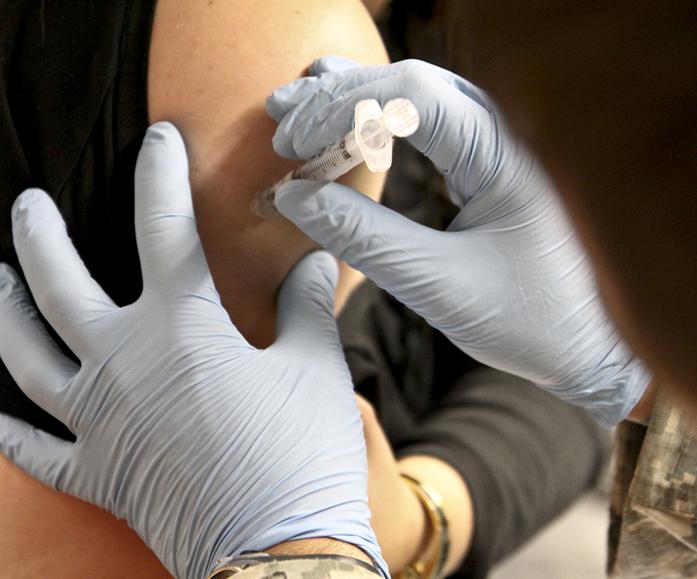Flu season is a guessing game for health officials.
By Ali Krogman
[email protected]
Fall weather means the beginning of school and cooler temperatures, a combination grabbing health officials’ attention for one major reason: the flu.
Hospitals, health departments, and pharmacies gear up each flu season for the next round of vaccinations, but they still sometimes find themselves unprepared for what the season brings.
The type of influenza vaccination and its effectiveness differ each flu season. Health officials say it’s hard to tell whether the type chosen each year will work.
Patricia Winokur, a University of Iowa professor of internal medicine, said strains that go into flu vaccines are chosen nine months in advance so manufacturers can produce vaccines in time for the flu season.
“Most of the time, we do a good job picking the dominant strain,” Winokur said. “Last year, we didn’t do quite such a good job, so there were poor matches between vaccine strains chosen and the strains that circulated.”
The 2014-15 flu season’s viruses differed from the vaccine virus, causing less effectiveness. According to the Centers for Disease Control & Prevention, the “drift” from the vaccine virus resulted in the highest-ever recorded hospitalization rate of people 65 and older from the flu.
“We always think we pick wisely, and then nature chooses a different strain to circulate,” Winokur said. “But we think we have the right strains in this year’s vaccination.”
Winokur said the Southern Hemisphere, which tends to experience the flu before the United States, sometimes indicates the severity of the flu season.
“Right now, it’s not obvious that there is a bad strain of flu that’s circulating,” Winokur said. “Though there can be differences between hemispheres, and things can change with the strain, where it starts as one strain and evolves as another.”
Patricia Quinlisk, the state epidemiologist and medical director of the Iowa Department of Public Health, said it is difficult to guess which strain will appear each year, as well as finding an effective way to change a strain when it appears.
She said the best way to keep the spread of influenza as low as possible is to educate people on how to prevent exposure.
For UI students, information can be found at Student Health and Wellness, which provides both flu shots and nasal sprays as vaccination options.
Lisa James, the associate director for clinical outreach at Student Health, said the peak flu season is January through February, but most people receive their vaccinations now.
James said it’s important for students to be aware that the college environment is different when dealing with the flu.
“People are in a different social and living setting and in closer contact with others,” James said. “If a student has never gotten a flu shot before, this would be the year to do it.”



